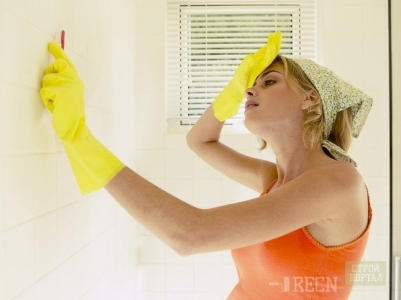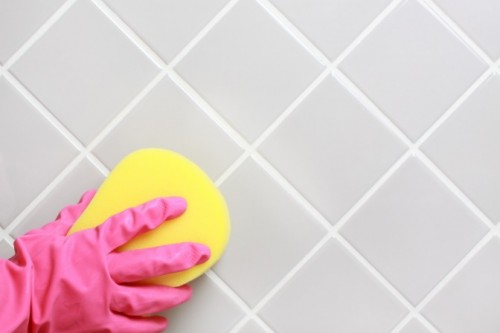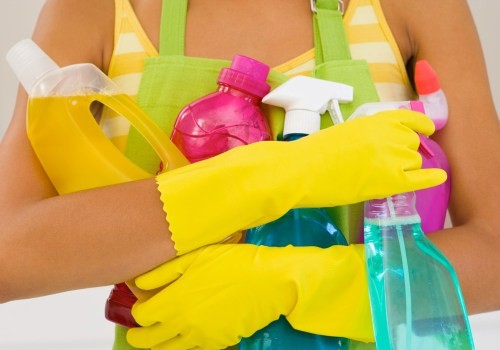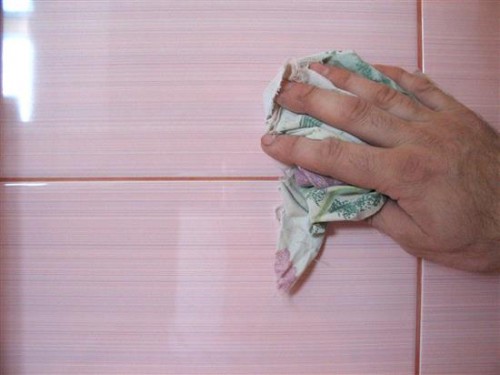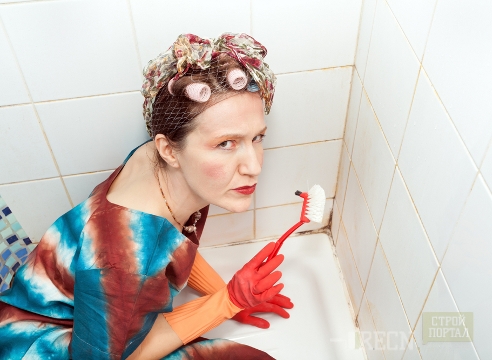
Cleaning tiles and interputric seams Tile
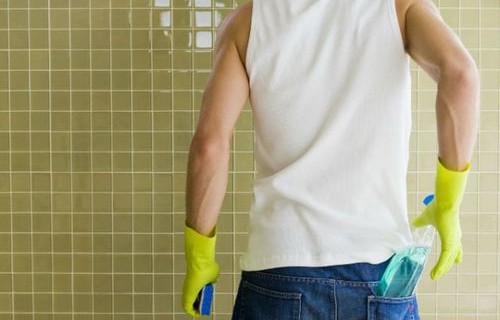
The most common building materials for lining of walls, gender in the kitchen and in the bathroom is a ceramic tile. This is due to its excellent operational properties and the possibility of choosing the desired color. That is why the question of how it is better to wash it is extremely acute.
Content
Features of concerns about intercine seams and surface material
Before starting the ceramic tile, it is necessary to think over everything to the smallest detail, namely how to protect the seams between the products that can darken and become a seedler of microbes. So special fluid will help to prevent contamination. She needs to walk for each seam at least 2 times. You can buy it in a construction store.
To eliminate the emerged construction mud on the matte surface, experts advise to use a scraper or a rigid brush, as well as an acidic concentrated mixture. Today, such chemicals such as Professional, Karcher, Powerfix, Tana have proven well established well.
Self removal of contamination by mechanical manner - a safe method for matte tiles, glossy needs more careful care.
Tile Cleaning: Rules
- Cleaning the tile after grouting of seams should be carried out with the help of a viscose or synthetic sponge, special composition and rubber gloves.
- Before washing the surface, it is necessary to estimate its degree of pollution. This depends on the choice of means for cleaning tiles and seams.
- With regular use of abrasive substances, the tile can lose the shine.
- Before washing the tiles on the floor, use a steam cleaner or a vacuum cleaner.
Cleaning Ceramic Tile: Folk Methods
1. The surface, lined with tiles, is perfectly cleaned with the help of a chalk dissolved in water. To do this, you need to walk on the whole wall, and then wipe it with a dry cloth. The tile acquires the shine, and the grooves between the joints become light.
2. Clean the tile in the bathroom and give it a shining view using a mixture of water with 6% vinegar (3 tbsp. Vinegar per 1 liter of water).
3. To accumulate gloss, use a rag moistened with denatant.
4. Cleaning the floor tiles and walls can also be performed using a solution of ammonia and water (2-3 tbsp. Vasharya for 1 liter of liquid). The surface after processing should be wiped with an artificial suede.
5. To remove traces of fat, replace the ammonia solution by the same amount of vinegar. In very polluted areas, use undumminated vinegar, which then is immediately washed off with water.
6. Clean the tile after repair can be possible with the help of an abrasive grinding paste or a conventional soap solution. However, the first is allowed to use only for a unhappy surface.
7. Wash off a soap precipitate on a tile in the bathroom will help the composition of 3 l hot water and 2 ppm. Salts of phosphoric acid. After the procedure, the surface must be rinsed with clean water.
8. The darkened tile can be laundered using any liquid detergent or powder. It should be left for 3 hours and give to impregnate the surface. After that, eliminate stains with ordinary warm water and sponge.
9. The fungus is cleaned with water chlorine solution. To do this, use a brush with soft bristles, and then process the surface with a special means against mold.
10. Remove stains from mustard, blood, coffee, ink, juice will help the chlorine content. It must be diluted with water and apply on a stain, leaving for 10 minutes, and then washed off with clean water.
11. Traces of rust with a non-aggregated tile are easily eliminated by 5% hydrochloric acid.
12. Bright stains from rigid water can be removed using a conventional white vinegar, which is wiped with the surface of the tile.
Cleaning seams between tiles
Cleaning methods
- With steam.
- Masking seams.
- Folk remedy.
- Using the compositions containing chlorine.
- With the help of cleaning household agents.
Top tile seam cleaning facilities
1. If a large amount of dirt accumulated in the seams - take advantage of the toothbrush by processing the contamination areas using any cleaning known means (for example, CIF, SILIT, etc.). Hold 10 minutes and rinse it with warm water. Then wipe the locations of the joints with a soft cloth.
2. When fresh black seams occur in seams - use the cleaning agent with chlorine content (for example, "whiteness").
3. Folk remedy for removing contaminants between seams:
- ammonia;
- toothpaste;
- baking soda;
- vinegar 6%;
- lemon juice, diluted with water.
Preparation of the solution:
1.5 liters of water take 1/2 art. Soda, then all this is poured with vinegar (1/4 of Art.) and lemon juice (1/3 of Art.). The resulting mixture mix with the ammonia.
Recommendations:
- open the windows and the doors before preparing the solution - create drafts
- use rubber gloves;
- after updating the seams, leave them to stand for 15 minutes and wipe the pure cloth.
4. If small sections are amazed with fungus - disguise them with a waterproof filler. If a large area is suture with moisture resistant (water-level) paint.
5. In addition, a steam generator can be used to clean the seams between the tile. Here it is enough to send a stream of hot steam to the desired area, and then remove the dirt and rinse the purified seam thoroughly.
6. Remove fungi, strong contaminants can be used with shallow sandpaper.
7. In the event that cleaning no longer helps, you need to use the replacement of the grout. For this, the old one is removed and applied new, but already with special protection against pollution.
8. To clean the grouts, you can apply an oxygen bleach that will restore the color of the seam and will require a minimum of effort. Just mix it with warm water and pour into a polluted area. Leave half an hour and rush with clean water.




